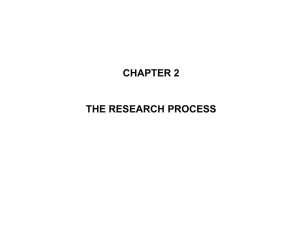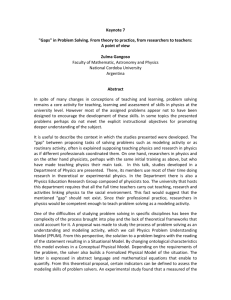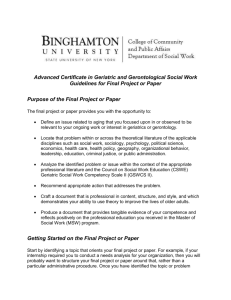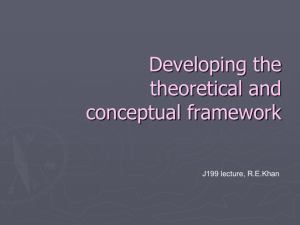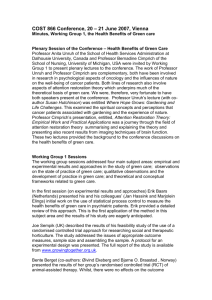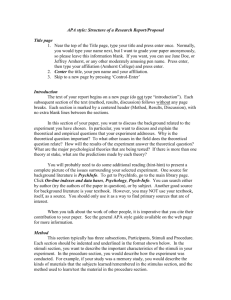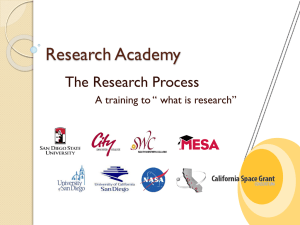Case Studies
advertisement
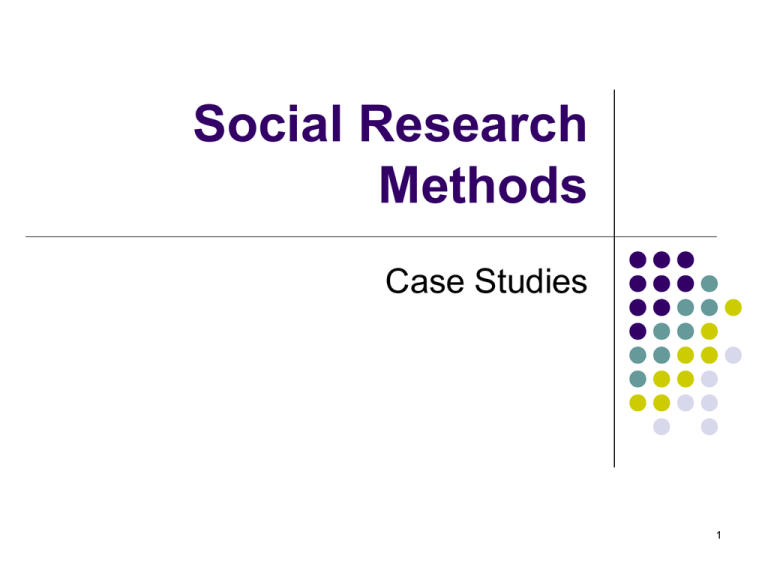
Social Research Methods Case Studies 1 What is a Case Study? “A strategy for doing research which involves an empirical investigation of a particular contemporary phenomenon within its real life context using multiple sources of evidence” (Robson, 1993, p. 146) A Case Study may be… Descriptive Exploratory Explanatory Focussed on Process - how was it done? Outcome - does it work? 2 Types of Case Study Individual Case Study Set of individual case studies Outsiders - Becker on Marijuana smokers and musicians Studies of organizations and institutions Family and Kinship in East London, The Azande in the Sudan Social Group Studies Three general practice surgeries compared Community Studies Stanley, the ‘jack-roller’ - Shaw. Working for Ford - Benyon; National Front - Fielding Studies of events, roles and relationships Housewife - Oakley; Cuban Missile Crisis 3 How to plan a case study Think about… Conceptual Framework Research Questions Research Design Sampling/replication strategy Methods and Instruments Analysis of Data 4 Conceptual Framework Displays the important features of a case study Shows relationships between features Makes assumptions explicit Selective Iterative Based on theory Takes account of previous research Includes personal orientation Includes overlaps and inconsistencies 5 Research Questions Consistent with conceptual framework Covers conceptual framework thoroughly Structured and focussed Answerable Forms basis for data collection 6 Basic Types of Case Study Design Cases One Several Many Spatial Variation Temporal Variation No Yes None 1 2 Single case study – diachronic Within case 3 Single case study – synchronic 4 Single case study – synchronic & diachronic Cross-case & withincase 5 Comparative Method 6 Comparative Historical Cross-case 7 Cross sectional 8 Time-series crosssectional Cross-case & withincase 9 Hierarchical 10 Hierarchical time-series Shaded cells are case study research designs From Gerring, John (2007) Case Study Research. Cambridge: Cambridge University Press. p. 28. 7 Replication Strategy (sometimes called sampling strategy) Literal vs. theoretical replications Literal = more of the same Theoretical = different, identified according to a theoretical standpoint. Must be linked to research questions Determines the extent to which generalisation is possible (N.B. Theoretical not statistical generalisation.) 8 Theoretical Replication Choose: Actors Settings E.g. different companies, different branches of political party, range of local authorities. Events E.g. Men and women, MEPs from different countries, members of different pressure groups E.g. Elections, selection meetings, budget group meetings, demonstrations. Processes E.g. Negotiating new laws, developing media strategies. 9 Why select a single case? Critical case (test case) Extreme or unique case Theory well developed. Case will confirm or refute theory. E.g. Festinger et al. When Prophesy Fails Common in clinical cases. E.g. Fielding - National Front Representative or typical case Capture the circumstances of the everyday. E.g. Lynd & Lynd - Middletown study. 10 Methods and Instruments Observation Interview Participant observation Ethnography Systematic observation Open-ended Focussed/semi-structured Structured Documents/Records E.g. minutes of meetings, patient records, diaries… Etc. 11 Analysis of Data Prepare (lots of data) May start during data collection How will the data be organised? What analysis strategy will you use? Follow theoretical propositions Develop descriptive framework 12 Problems for Validity Unreliable self-report data Unsubstantiated observations Post-hoc, unsystematic summaries Speculation and overgeneralization 13 Common pitfalls Token literature review Premature theorizing Phase slippage 14

